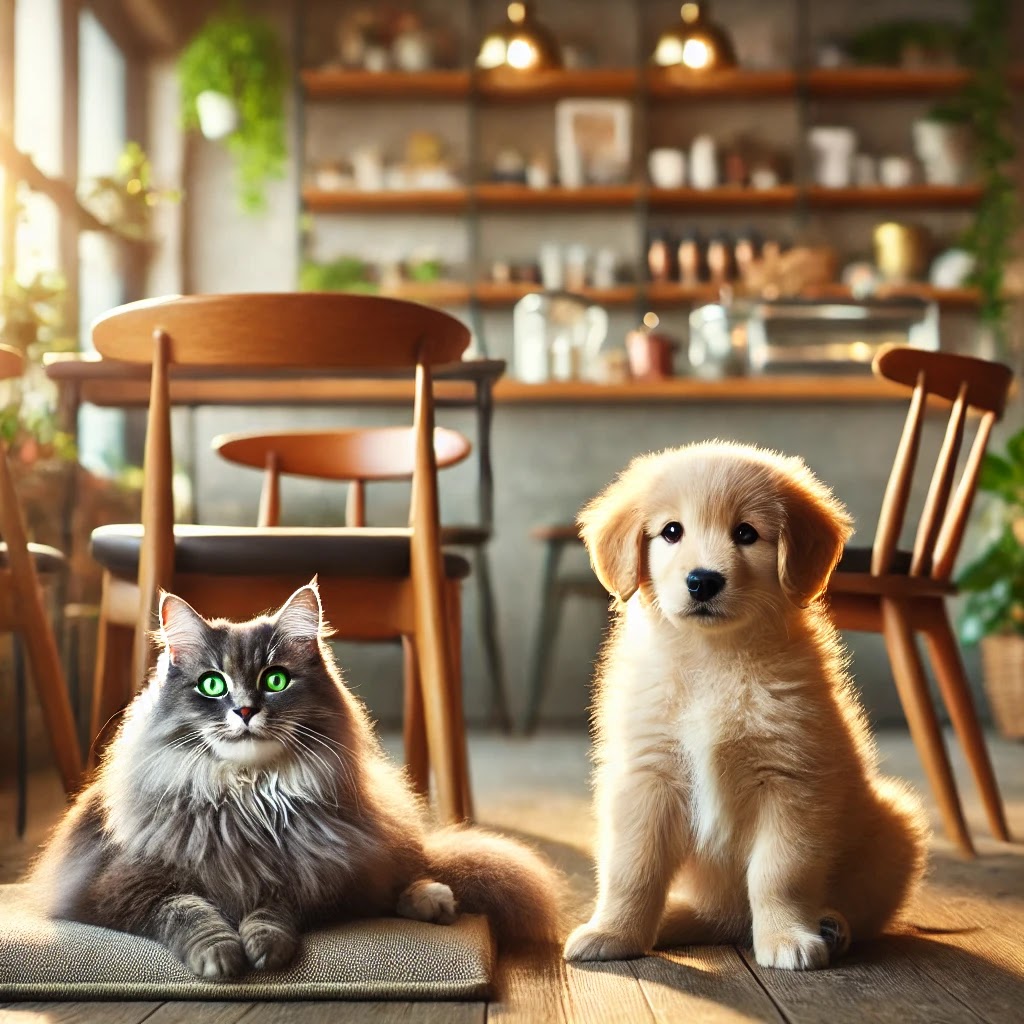With China’s pet economy booming, pet cafes are flourishing as popular retreats. Offering a tranquil space to unwind with rescued cats or dogs, these cafes provide a unique experience that combines relaxation with animal welfare. Paw Infinity in Beijing, for example, has rescued nearly 30 stray cats since June. Embracing the “adopt, don’t shop” philosophy, such cafes attract visitors, sustain revenue, and support the long-term stability of animal rescue efforts.
The pet economy is booming worldwide, and a huge part of this surge can be attributed to the growing popularity of pet-friendly spaces, particularly the cat and dog cafes popping up in urban areas. These spots combine the love for pets with a unique café experience, attracting animal lovers and coffee enthusiasts alike. Here’s a closer look at why pet cafes are flourishing and the impact they’re having on the global economy.
Why Are Cat and Dog Cafes So Popular?
The concept of pet cafes began in Asia, with the first cat cafe opening in Taipei in 1998. The idea quickly spread, particularly in Japan, where tight living spaces and pet restrictions make it difficult for many people to have pets at home. Today, the trend has reached global cities, from New York to Paris to Mumbai, and continues to attract people for various reasons:
Therapeutic Escape: Spending time with animals has well-documented mental health benefits, from reducing stress to improving mood. Pet cafes offer this therapeutic benefit, allowing people to unwind in the company of furry friends without the long-term commitment of pet ownership.
Pet Ownership Without the Commitment: Many animal lovers simply aren’t able to have pets at home due to factors like living arrangements, allergies, or lifestyle constraints. These cafes give them a chance to experience companionship with animals without the responsibilities of daily care.
Social Experience: Pet cafes also create a unique social environment. Patrons often share stories about their own pets, fostering connections among like-minded individuals. Many cafes also host events, from pet adoption drives to themed parties, enhancing the sense of community.
Instagram Appeal: In today’s social media-driven world, pet cafes are highly photogenic and perfectly suited for Instagram. Sharing pictures of an adorable cat napping next to a latte or a puppy curled up beside a cappuccino attracts more visitors and spreads the word, giving these cafes a viral edge.
The Economic Impact of Pet Cafes
The pet economy is now worth billions globally, with pet cafes contributing significantly. Here’s how they play a role:
Job Creation: From pet handlers to baristas, pet cafes create jobs in the service and pet care industries. Specialized roles are often required for animal handling, veterinary care, and cleaning, boosting employment in these fields.
Boosting Local Economies: Pet cafes draw tourists, particularly in cities where they’re a new concept. As these cafes tend to source food and supplies locally, they also support nearby vendors, farmers, and suppliers.
Supporting Pet Adoption and Rescue Initiatives: Many pet cafes work with local shelters, providing homes for animals that would otherwise remain homeless. These cafes foster adoptions, helping connect potential pet owners with rescue animals, which reduces the burden on local shelters and promotes responsible pet ownership.
Additional Revenue Streams: Most pet cafes sell themed merchandise—think pet-themed mugs, apparel, or even pet products—which increases revenue. Some cafes even offer pet grooming services or organize pet-themed events, adding diverse income streams to keep the business profitable.
Challenges in Running Pet Cafes
Running a pet cafe requires much more than brewing good coffee. Here are a few unique challenges these businesses face:
Health and Safety Regulations: Mixing animals and food service requires strict hygiene and regulatory compliance. Countries vary in their health codes, and pet cafes often need to meet special requirements to ensure customer safety and animal welfare.
High Maintenance Costs: Caring for animals is a major operational cost for pet cafes. They must provide regular veterinary check-ups, proper diets, grooming, and cleaning supplies. The expense of animal care can be substantial, especially if the animals are rescues with existing health needs.
Seasonal Demand: Some cafes face fluctuating visitor numbers, often seeing a dip during colder months or holidays. They may need to get creative with promotions, events, or partnerships to maintain a steady customer base year-round.
Balancing Animal Welfare and Customer Interaction: It’s essential for cafes to ensure the animals aren’t overwhelmed or over-stimulated. Many cafes limit the number of patrons or time spent with the animals, but this can sometimes lead to dissatisfaction among customers who want a longer experience.
What’s Next for Pet Cafes?
The pet cafe trend is expected to continue growing. Future cafes may incorporate more technology, such as online booking systems, mobile apps for reservations, or even virtual pet interactions through augmented reality for those who can’t visit in person. Additionally, as people become more eco-conscious, cafes may also incorporate sustainable pet products and zero-waste practices.
In Conclusion
Pet cafes are a delightful example of how the pet economy is innovating to meet the changing needs of animal lovers worldwide. As people continue to seek comfort, connection, and convenience in their interactions with animals, these cafes bridge the gap between pet ownership and companionship. Whether it’s the soothing purr of a cat or the joyful bark of a dog, pet cafes provide a unique environment that brings people and pets closer together—one coffee cup at a time.




No comments:
Post a Comment